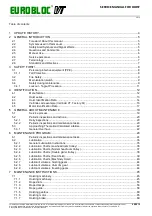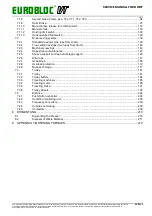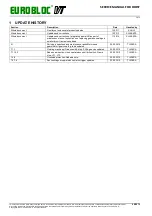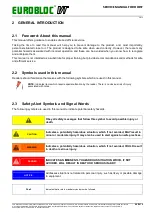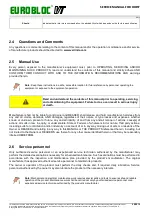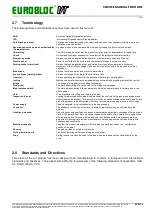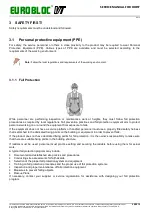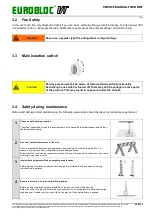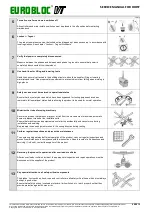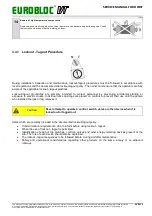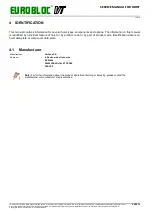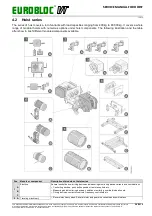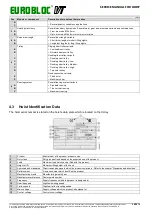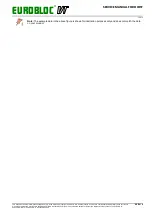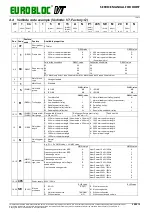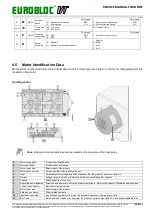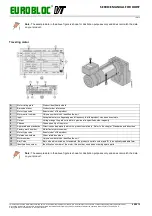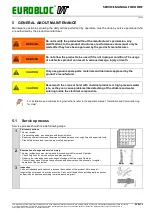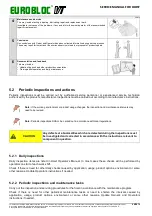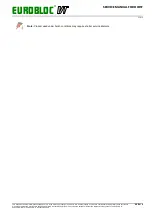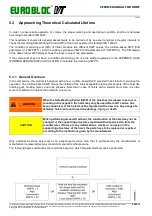
EUROBLOC
SERVICE MANUAL FOR HOIST
7/212
This document and the information contained herein, is the exclusive property of Verlinde S.A.S. and represents a non-public, confidential and proprietary trade secret that
may not be reproduced, disclosed to third parties, altered or otherwise employed in any manner whatsoever without the express written consent of Verlinde S.A.S.
Copyright © (2013) Verlinde S.A.S. All rights reserved.
06/2015
2.7
Terminology
The following terms and definitions may have been used in this manual:
ANSI
American National Standards Institute
ISO
International Organization for Standardization
Authorized personnel
Persons who are authorized by the owner and who have the necessary training to carry out
operation or service actions.
Experienced service person authorized by
the manufacturer
A person with service experience who is properly trained to perform service actions.
CE marking
The CE-marking indicates that the product complies with the appropriate CE regulations.
Check
A visual and functional assessment (not a test) of the product without dismantling.
Emergency brake
A brake that can be applied by the operator, or automatically upon loss of power.
Electric panel
Power is controlled to the motors and components through the electric panel.
Parking brake (storm lock)
A brake that can be applied either automatically or manually and prevents horizontal
movement of the trolley or bridge. Used when movements need to be prevented in windy
conditions.
Main brake
A brake that stops motion and prevents movements.
Second brake (Holding brake)
A brake that supports the load if the main brake fails.
Operator
Person operating the product for the purpose of handling or moving loads.
Inching
Making very small movements by repeatedly and momentarily pressing the direction control.
Bridge
The bridge (main girder) moves along the runway
Main girder
The main girder (bridge) is connected to the bridge end carriages.
Main isolation switch
The main isolation switch is the power switch which the operator should normally use to turn
off the power.
Hoist
Drive mechanism for lifting and lowering the load.
Inspection (Visual)
Looking for defects and checking the operation of the controls, limiting and indicating devices
without loading the product. This is much more than a check but does not normally require any
part of the product to be dismantled other than for removal or opening of covers or housings.
Power supply
Power is supplied to the components via the power supply.
Controller
The pendant or other type of controller is used by the operator to give commands to the
product.
Qualified personnel
One with necessary qualification based on theoretical and practical knowledge of hoists or/and
cranes. The person must be in a position to assess the safety of the installation in conjunction
with the application. Persons with the authority to undertake certain maintenance work on
products of manufacturers include manufacturers’ service engineers and trained fitters with
corresponding certification.
Maximum capacity
Load that the product is designed to lift for a given operating condition (e.g. configuration,
position of the load).
Runway
The product rides on or under the runway.
Trolley (hoisting unit)
The trolley (hoisting unit) moves along the main girder.
Sling
A sling is used to attach the hook to the load when the load cannot be lifted directly by the
hook.
2.8
Standards and Directives
This state of the art product has been designed and manufactured to conform to European and international
standards and directives. The product also fulfils the requirements of the following standards (if applicable): CSA,
UL, RoHS, OSHA, CCC.


